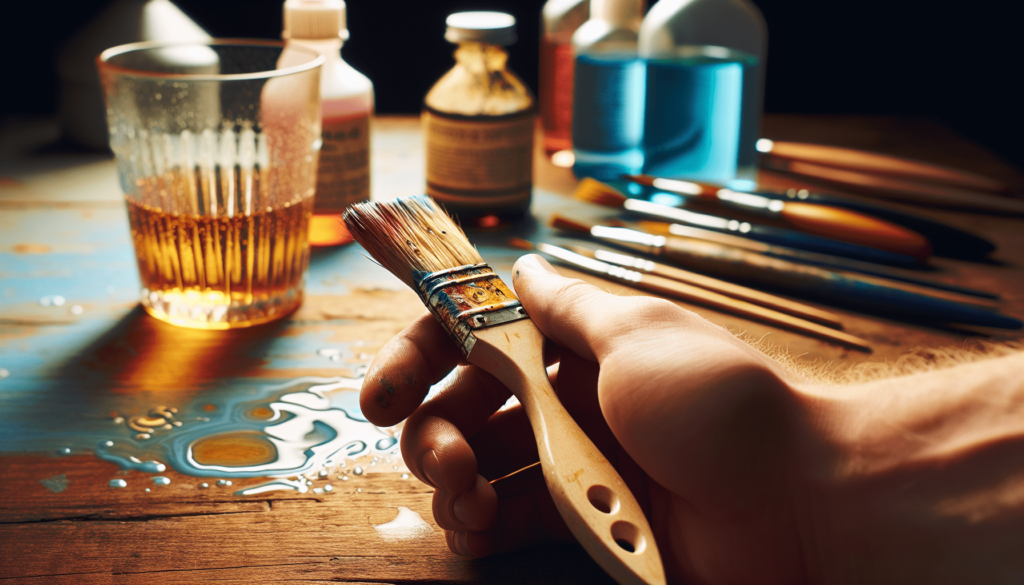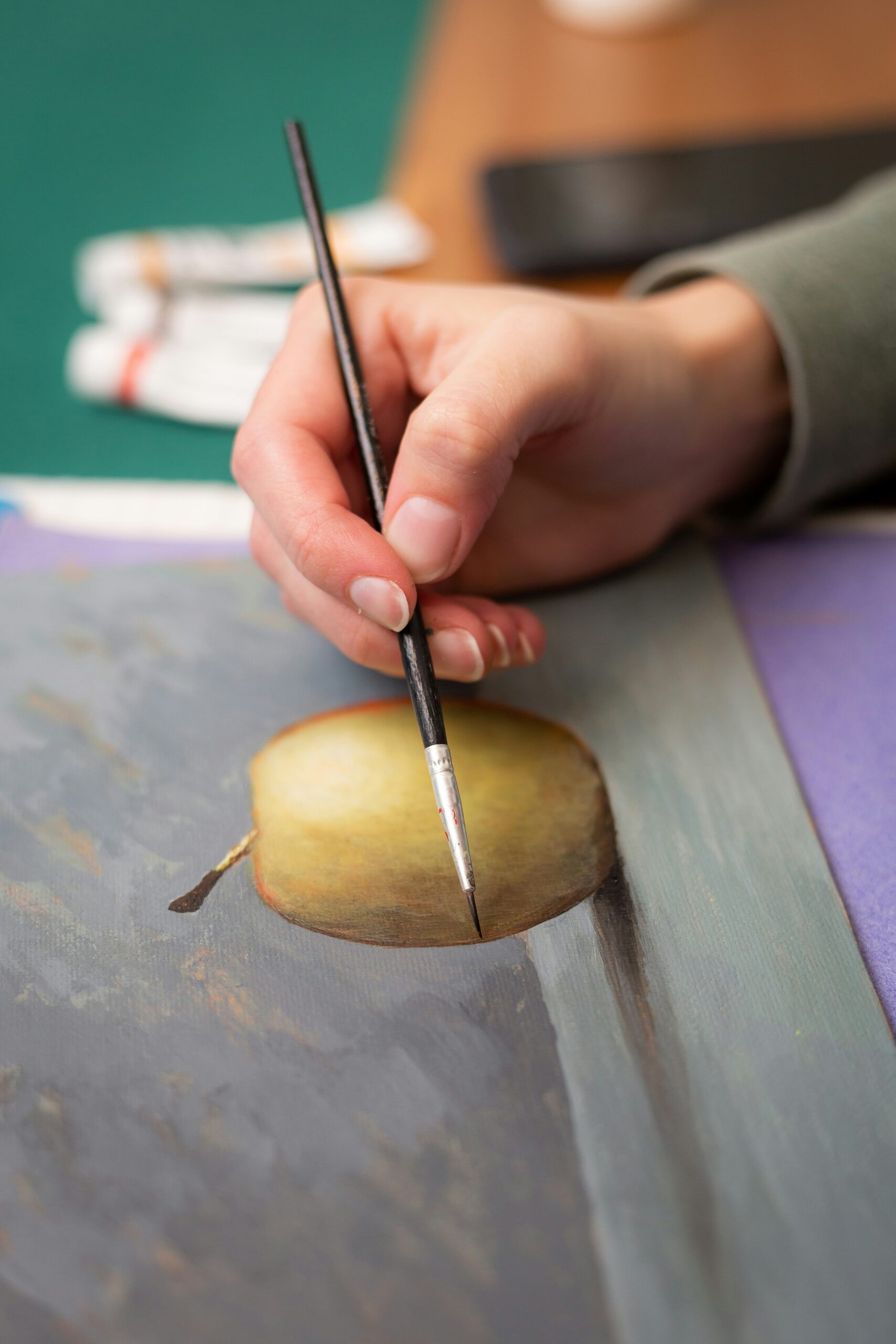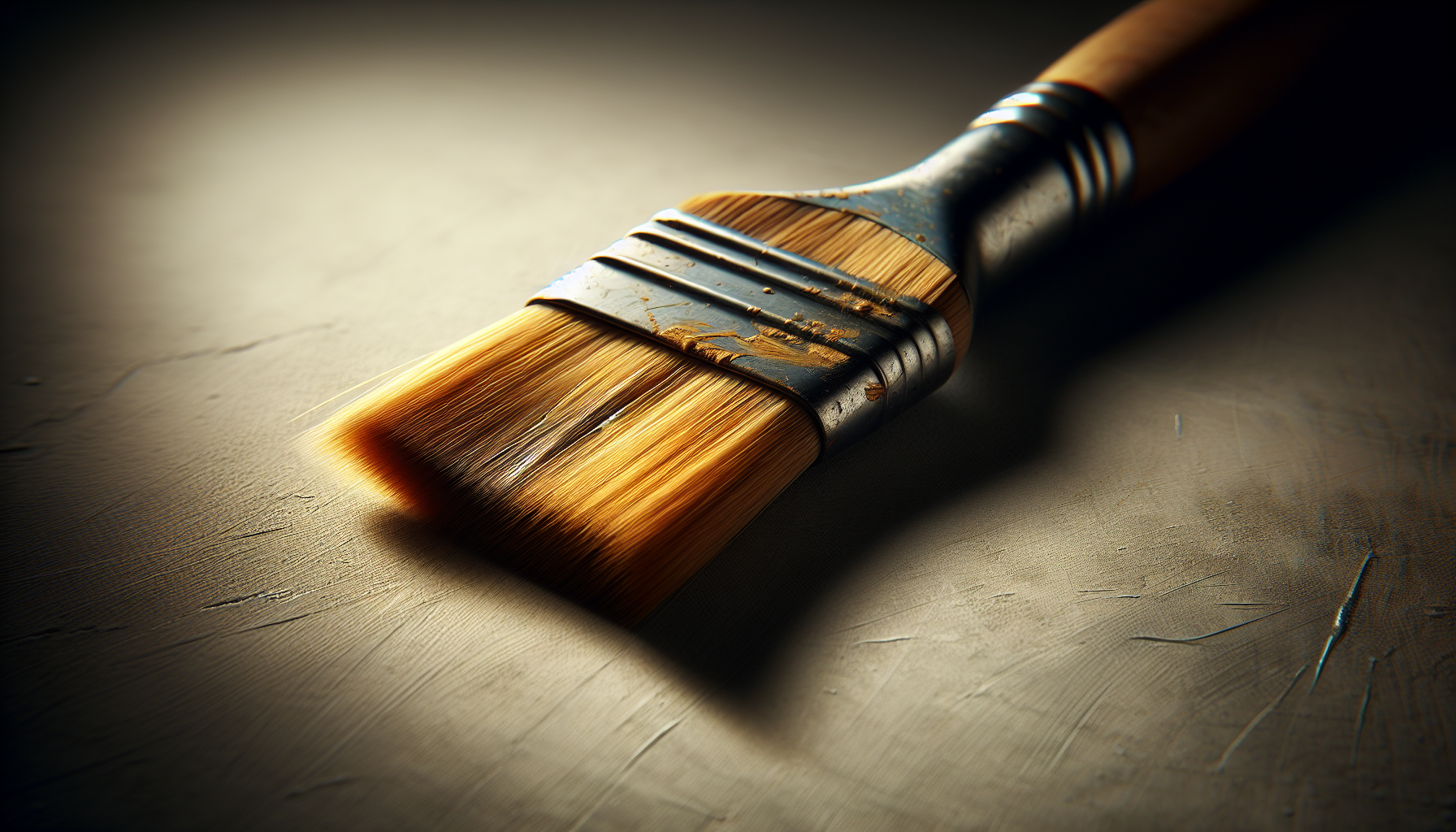Unlocking the secrets of taking care of your treasured paintbrushes effectively is a crucial step you need to take as a budding artist or professional painter. This article imparts the reliable, step-by-step process on how to clean enamel paint from brushes, ensuring their prolonged lifespan and consistent performance. Breathe new life into your beloved brushes after every art-making session, maintain their form, and preserve their bristles — all of which can be achieved perfectly through this helpful guidance. The act of cleaning and caring for your brushes is now made effortless with these straightforward methods.
Preparation
Before you begin the process of cleaning enamel paint from brushes, the initial step that you must undertake is the preparation. Being prepared pays off in ensuring the cleaning process is smooth, efficient and effective.
Gather necessary materials
In order to clean enamel paint from brushes, you need to gather the right materials. These would typically include a paint scraper or knife, a cloth or paper towel, some mild soap or a specialized brush cleaner, warm water, a container for soaking the brush, and possibly a brush spinner. If the paint is hardened, you may require vinegar or paint thinner. Being organized will help streamline the process, ultimately saving you time and effort.
Prepare a clean work area
This simply means that you should clean and set aside a specific area where you will be conducting the process. You don’t want your brush cleaning materials mixing with dirt and contaminants. A clean space is conducive to the effective cleaning of your brushes.
Removing Excess Paint
The next step in this process is about dealing with the excess paint still remaining on your brush.
Scrape off excess paint
First, try to get rid of as much paint as possible from the brush by scraping it off. This will help make your task of cleaning the brush much easier.
Wipe brush with a cloth or paper towel
Once you’ve scraped off as much paint as you can, use a cloth or paper towel to wipe off any remaining paint. This step further ensures the brush is as clean as possible before the actual cleaning process begins.
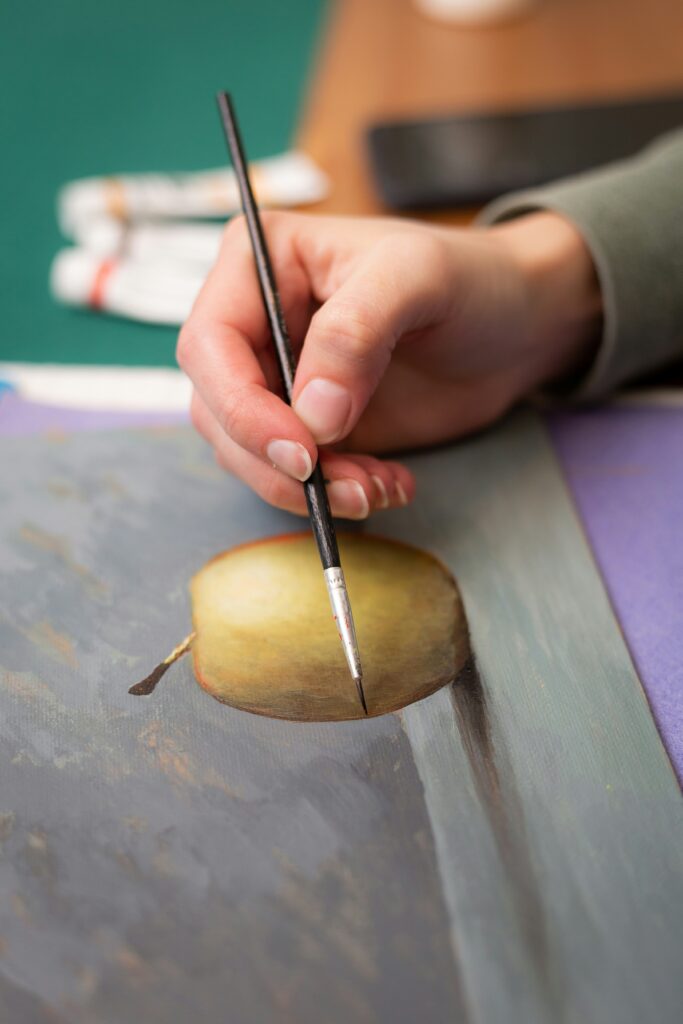
Rinsing
After removing as much excess paint as possible, the next step is to rinse the brush.
Rinse brush with warm water
Warm water can loosen up the dried enamel paint and make it easier to remove. Run warm water over the bristles, making sure to reach the base where paint often accumulates.
Use a brush cleaner or mild soap
Apply a mild soap or a specialized brush cleaner to the bristles. These cleaning agents would further help in breaking down the paint particles.
Gently massage bristles to remove paint
Using your fingers, gently massage the soap or cleaning solution into the bristles. This will help to further loosen and remove the remaining paint.
Soaking
After a thorough rinse, soaking can help clear out any stubborn paint still clinging onto the brush.
Prepare a cleaning solution
Fill a container with a cleaning solution. This could be warm soapy water or a specialized cleaning solution.
Submerge the brush in the solution
Completely submerge the brush in the solution, ensuring all bristles are covered.
Let the brush soak for a few hours
Allow the brush to soak in the solution for a few hours. The exact duration would depend on how severe the paint stains are.
Gently agitate the brush to loosen paint
Gently stirring the brush in the solution will further loosen the lingering paint.
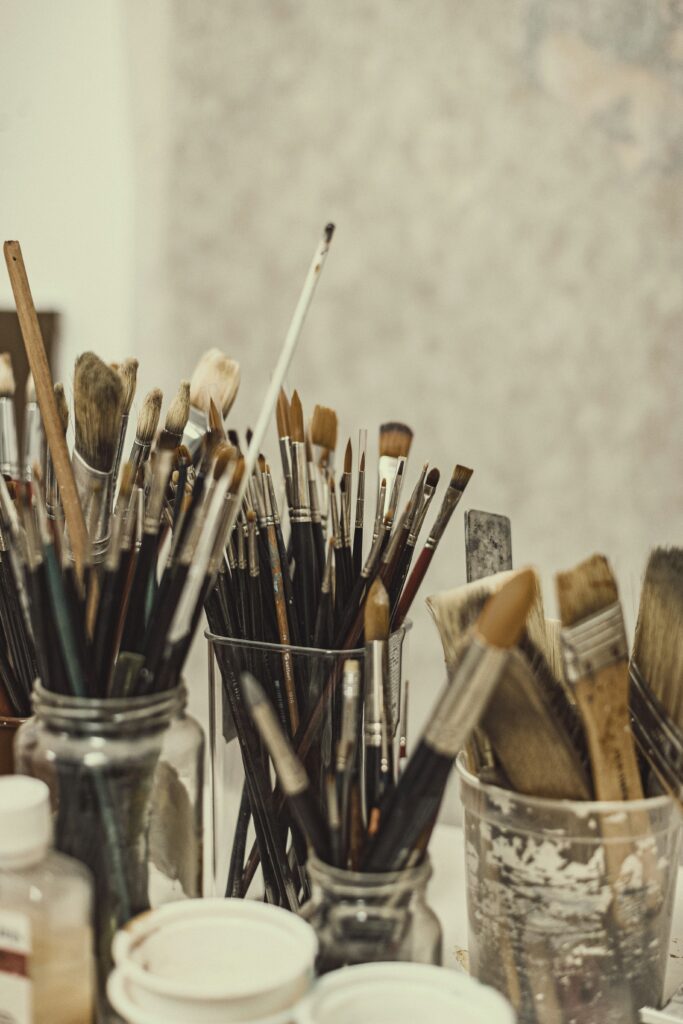
Brush Cleaning Techniques
There are different techniques you can utilize to clean brushes. The most common ones include hand cleaning and using a brush spinner.
Hand Cleaning Method
This method is quite simple and requires minimal materials.
Using a Brush Spinner
A brush spinner is a tool designed specifically for cleaning brushes. Its high-speed spinning action can effectively clean and dry brushes.
Hand Cleaning Method
Here is the step-by-step guide on how to apply the hand cleaning technique.
Apply brush cleaner or mild soap
Just like in the rinsing stage, apply a mild soap or brush cleaner to the bristles.
Gently scrub brush bristles
With the cleaner applied, scrub the bristles gently to ensure every strand is clean.
Rinse with warm water
Once you’re done scrubbing, rinse your brush thoroughly with warm water.
Repeat if necessary
If there is still paint left on the brush, repeat the cleaning process until the bristles are clean.

Using a Brush Spinner
Using a brush spinner can be highly effective for cleaning brushes. Here’s how to use one:
Attach brush to brush spinner
Secure your brush onto the brush spinner following the specified instructions.
Dip brush in water or cleaning solution
With the brush attached, dip it into warm water or a cleaning solution.
Turn on the spinner to spin the brush
Turn on the spinner to rotate the brush at high speed. This helps to remove paint and thoroughly clean the brush.
Rinse brush with warm water
Give the brush a final rinse with warm water to remove any residual cleaning solution.
Repeat if necessary
Like with hand cleaning, you should ideally repeat the process until the brush is completely clean.
Drying
Gently squeeze excess water from brush
After the cleaning is complete, ensure all excess water is removed by gently squeezing it from the bristles.
Reshape brush bristles
Once the water has been drained, use your fingers to reshape the brush bristles back to their original form.
Lay brush flat or hang upside down to dry
In order for the brush to dry properly, it can either be laid flat or hung upside down. This helps maintain the shape of the brush and prevents any damage to the bristles.
Avoid drying near direct heat sources
Heat can damage the bristles, so avoid placing the brush directly next to heat sources like radiators or fires.
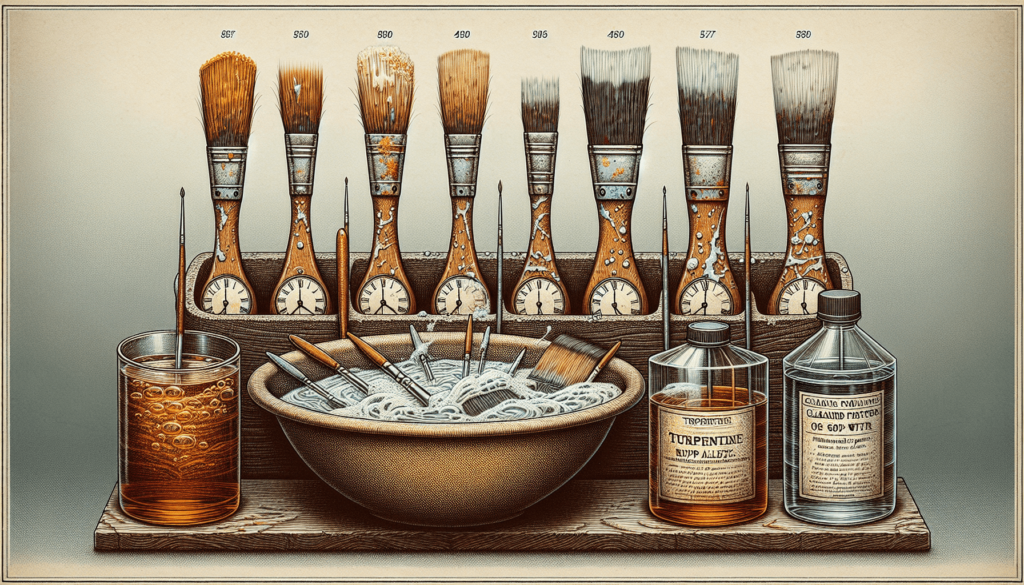
Cleaning Hardened Paint
Soak brush in vinegar or paint thinner
For hardened paint, soaking the brush in vinegar or paint thinner can be very effective.
Gently scrubs brush bristles
After soaking, gently scrub the brush bristles to dislodge the hardened paint.
Rinse with warm water
Rinse thoroughly with warm water to remove the vinegar or paint thinner and any loosened paint.
Repeat until paint is removed
Continue the process until all the hardened paint is removed.
Maintenance
Clean brushes immediately after use
Cleaning your brushes immediately after use will prevent the paint from hardening and making future cleaning more difficult.
Store brushes in a proper container
After drying, store your brushes in a proper container to prevent dust and other particles from contaminating the bristles.
Inspect brushes for any remaining paint
On a regular basis, check your brushes for any signs of remaining paint, and clean them if necessary. This preventive measure will enhance the longevity and effectiveness of your brushes.
